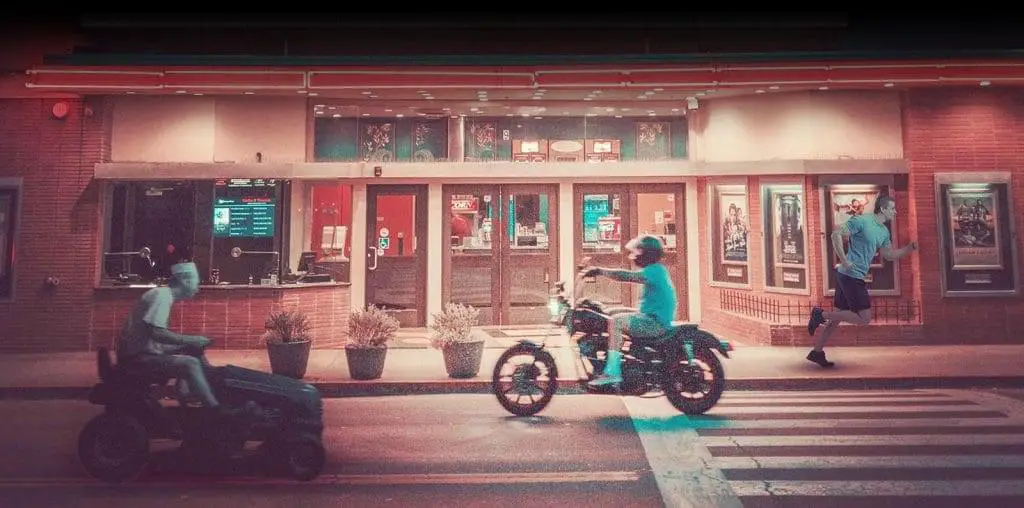
BOOTLEG FILES 451: “The Kool-Aid Commercials” (a long-running series of television commercials for a popular soft drink).
LAST SEEN: Many of the commercials are on YouTube.
AMERICAN HOME VIDEO: None.
REASON FOR BOOTLEG STATUS: Because nobody is releasing DVD anthologies of weird old TV commercials for a single brand.
CHANCES OF SEEING A COMMERCIAL DVD RELEASE: Oh no!
One of the joys of being a kid in the 1970s was the ability to come of age in a decade when logic and good-taste took a 10-year vacation. It was a time when a president quit the White House, neighborhood cinemas ran X-rated movies, polyester was the fabric of choice and a six-foot anthropomorphic pitcher of soft drink ran through walls. And no one thought any of this was peculiar.
But let’s talk about that giant pitcher who demolished property. That was Kool-Aid Man, and for most of the 1970s and into the early 1980s, he was a ubiquitous presence on American television. How this unlikely icon came to become a pop culture phenomenon is, hands down, one of the more unusual tales of product marketing.
Kool-Aid had its genesis in Hastings, Nebraska, where an entrepreneur named Edwin Perkins invented a liquid concentrate that he dubbed Fruit Smack. Perkins kept fiddling with his product until he found a way to remove the liquid from Fruit Smack, which left him with a powder. Once water was added to the powder, a new drink was created. Perkins called the powdery substance Kool-Aid and enjoyed a profitable run with his product until 1953, when General Foods purchased Perkins’ business.
In 1954, General Foods introduced a new look for the Kool-Aid marketing that included a large pitcher that sported a happy face. This character was dubbed Pitcher Man and he was featured on the product packaging. Pitcher Man also turned up in Kool-Aid’s television advertising, but the character had relatively little to do – after all, pitchers don’t have arms and legs, so he was unable to run around. For most of the 1950s and into the 1960s, Pitcher Man appeared briefly in the commercials as a stolid presence while all sorts of nonsense happened around him – and in one of the most bizarre commercials (directed by Tex Avery), Pitcher Man sported an Indian war bonnet while animated tribal warriors and U.S Cavalry soldiers made peace over glasses of Kool-Aid.
Into the 1960s, Pitcher Man disappeared from television while Kool-Aid licensed the Warner Bros. cartoon characters and hired The Monkees to promote the product. By the 1970s, however, The Monkees were history and the Bugs Bunny campaign ran its course. Something new, different – and, perhaps, utterly inane – was needed to meet the zany vibe of the decade that good taste forgot. Thus, Pitcher Man was rebuilt into Kool-Aid Man.
Kool-Aid Man was Pitcher Man on steroids. He stood about six-feet-tall, which clearly made him stand out in a crowd. His smiley face remained frozen in place (a la Mr. Sardonicus) and he was given long arms and long legs that lacked pants (not that it mattered – he also lacked genitals). He was also given a red hue – whether this was a tribute to the popularity of Kool-Aid’s cherry flavor or whether this was a secret shout-out to Marxist philosophy is not clear.
The running theme of the Kool-Aid commercials involved small groups of children who find themselves in situations where they are ridiculously thirsty. Sometimes, the kids are in activities where you would expect to find youngsters: in sporting events, a school function, a bowling alley or just prowling in the neighborhood. But sometimes, the kids managed to hitchhike across the space-time continuum and wind up in different parts of the past, including a Prohibition-era garage and the castle of an Arthurian knight.
But here’s where things go awry. The kids, eager to get a quick (and free) drink, yell in unison, “Hey Kool-Aid.” And then, Kool-Aid Man would some come crashing through a wall, while a Wolfman Jack-style voice filled the soundtrack by cheering, “Oh, yeah!” Kool-Aid Man would then run past the rubble he created, usually holding a smaller pitcher in his hand, while adults would react in slapstick horror at the vision of this monster pitcher. However, the kids would embrace this unlikely visitor – and the adults, after sharing a glass of the soft drink with the youngsters, would admiringly acknowledge, “Your friend is cool.”
Sometimes there would be a variation on the happening: Kool-Aid man would burst through a fence or even crash through a ceiling. And by the beginning of the 1980s, his frozen face was given animated motion. But the basic concept remained, with the pitcher immediately answering the call to quench some kid’s thirst by demolishing somebody’s property and leaving a trail of wreckage and terror in its midst.
But, hey, everyone secretly loves a bad boy, and Kool-Aid Man became such a beloved presence in American culture that he crossed over into other media. He was the subject of a pair of video games for the Atari and Intellivision series, and he was also the subject of a comic book series.
However, as the 1980s progressed, Kool-Aid Man’s modus operandi began to change. He was given clothing and his property-wrecking behavior was replaced by having him as a participant in kid-friendly activities. Beginning in 1994, the giant pitcher was replaced by computer-generated animation, although a new series of commercials featuring a different live-action Kool-Aid Man would later appear on the air.
However, these later commercials took away all of the nihilist fun of the 1970s campaign. The idea of a giant living pitcher of soft drink (and not very good soft drink, I might add) physically destroying homes and businesses so a bunch of lazy kids can have a drink served to them was, simultaneously, sheer lunacy and sheer brilliance. Although Time Magazine would later dub him one of the “Top 10 Creepiest Product Mascots,” free-thinkers would come to appreciate his insouciant attitude to concepts of private property, personal responsibility and public safety. This may explain why parodies of Kool-Aid Man have proliferated from years – Seth MacFarlane included the character in some of the funniest random gags in “Family Guy,” while a “Terminator” inspired “Kool Aide Man” has been the star of a Net video series that adds wisecracking homicidal behavior to the big pitcher’s bag of tricks. And, of course, Dane Cook can thank Kool-Aid Man for helping to bring him to stardom.
It should be noted that there are two places where the Kool-Aid Man never crashed. The first is Ken Kesey house, where he would probably have fit in perfectly with the antics that were detailed in the Tom Wolfe classic “The Electric Kool-Aid Acid Test.” The second place was the Jonestown compound in Guyana. The expression “drink the Kool-Aid” is actually a major mistake – the poor deluded folks that committed mass suicide actually drank potassium cyanide mixed in a Kool-Aid rip-off called “Flavor Aid.”
To date, there has never been a commercial home entertainment release that brings together all of the Kool-Aid Man crash-the-wall advertisements. But many of them are available for YouTube viewing, while many more are probably lodged in the minds of those who survived the 1970s with their sanity intact. Oh, no! Oh, no! Oh, yeah!!!
IMPORTANT NOTICE: The unauthorized duplication and distribution of copyright-protected material, either for crass commercial purposes or profit-free s***s and giggles, is not something that the entertainment industry appreciates. On occasion, law enforcement personnel boost their arrest quotas by collaring cheery cinephiles engaged in such activities. So if you are going to copy and distribute bootleg material, a word to the wise: don’t get caught. Oddly, the purchase and ownership of bootleg DVDs is perfectly legal. Go figure!



There is one Kool – Aid commercial that I remember watching on TV in either 1977 or 1978 that had the kids coming out of a haunted house or castle, and a guy dressed up like a vampire coming after them, saying “Not so fast! I need something to quench my thirst.”. The kids yell out “Hey, Kool-aid!”, and the Kool-aid Man breaks through the gate and pours the man a glass of Kool-aid, and the man says “Beautiful.”, pronouncing it in the manner of Vincent Price, whom I could have sworn was in that commercial , but I could be wrong. I haven’t found that commercial on YouTube, and I seem to be the only one who remembers seeing it on TV back then, though nobody else has mentioned it.